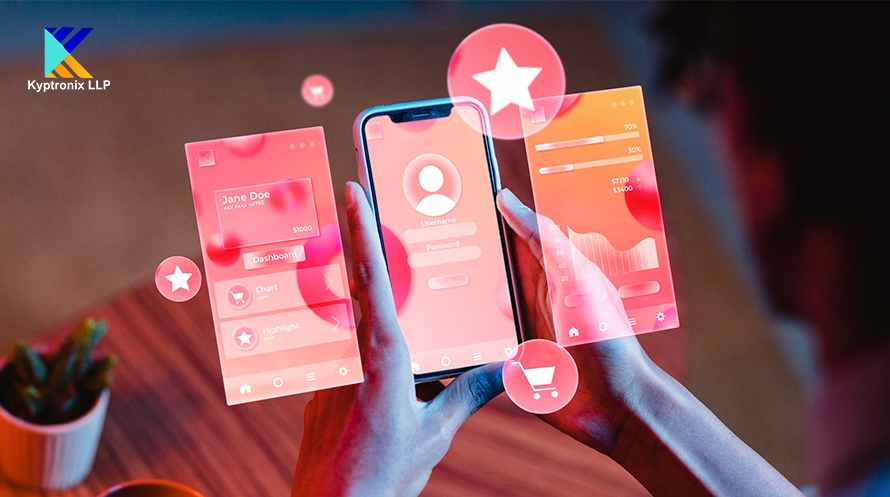As mobile technology rapidly advances, keeping up with the latest design trends is essential for small and medium-sized enterprises (SMEs). In 2024, innovative mobile app design can significantly enhance user experience, boost engagement, and help businesses stand out in a competitive landscape. This blog post explores the top mobile app design trends that SMEs should consider to create appealing and effective applications, ensuring they meet user expectations and adapt to evolving market demands. Leveraging mobile application development services effectively can also aid in implementing these trends seamlessly.
Dark Mode Design
Dark mode has surged in popularity due to its sleek aesthetic and energy-saving benefits. Many users prefer this option for its reduced eye strain, particularly in low-light environments. Implementing dark mode as a customizable feature allows users to choose their preferred display setting, enhancing overall satisfaction. This trend not only provides a modern look but also encourages prolonged app usage, making it a must-have for SMEs looking to improve user engagement.
Minimalist Interfaces
Simplicity remains a cornerstone of effective mobile app design. Clean, minimalist interfaces that focus on essential features reduce clutter and enhance navigation. By eliminating unnecessary elements, SMEs can create intuitive apps that enable users to find information quickly and efficiently. This approach not only enhances user experience but also makes it easier for users to complete desired actions, ultimately driving conversions and user retention.
Personalized User Experiences
Personalization is increasingly important in the digital landscape. Tailoring content, recommendations, and interfaces to individual users based on their preferences and behaviors can significantly improve user engagement. SMEs can leverage data analytics and machine learning to create personalized experiences that resonate with their audience. By understanding user habits and preferences, businesses can deliver targeted content, leading to higher satisfaction and loyalty.
Voice User Interface (VUI)
With the rise of voice-activated devices, integrating voice user interfaces into mobile apps can greatly enhance accessibility and convenience. VUI allows users to navigate apps and perform tasks using voice commands, making interactions more intuitive and hands-free. This feature is particularly beneficial for users with disabilities or those multitasking. SMEs should consider implementing VUI to cater to a wider audience and streamline the user experience.
Gesture-Based Navigation
As screen sizes increase and the demand for efficient navigation grows, gesture-based controls are becoming standard in mobile app design. Swipes, pinches, and taps can replace traditional buttons, providing a smoother and more engaging user experience. This trend simplifies interactions and aligns with the natural behaviors of users, particularly younger audiences accustomed to touch gestures. SMEs should incorporate gesture-based navigation to enhance usability and keep up with modern design practices.
Augmented Reality (AR) Integration
Augmented Reality technology continues to evolve, offering exciting opportunities for mobile apps across various industries. By integrating AR features, SMEs can enhance user engagement by allowing users to interact with digital elements in real-world settings. For example, retail apps can enable users to visualize products in their homes before making a purchase, while education apps can provide interactive learning experiences. Embracing AR can create memorable interactions and set SMEs apart from competitors.
Sustainability and Eco-Friendly Design
As consumers become more environmentally conscious, integrating sustainable practices into app design is essential. This can include optimizing apps for energy efficiency, reducing data usage, and promoting eco-friendly products or services. By adopting sustainable design principles, SMEs can attract eco-minded users and demonstrate their commitment to social responsibility. Highlighting these practices within the app can enhance brand reputation and foster customer loyalty.
Inclusive and Accessible Design
Creating an inclusive experience for all users is vital in today’s diverse digital landscape. SMEs should prioritize accessibility features such as text-to-speech, high-contrast visuals, and adjustable font sizes, ensuring that their apps can be used by individuals with varying abilities. This commitment to inclusivity not only broadens the customer base but also enhances brand reputation, making it a critical consideration for any business looking to build a loyal audience.
Conclusion
Staying ahead of mobile app design trends is crucial for SMEs aiming to create engaging and effective applications in 2024. By embracing dark mode, minimalist interfaces, personalization, voice navigation, gesture controls, AR, sustainability, and inclusivity, businesses can significantly enhance user experience and differentiate themselves in a competitive market. Investing in these trends not only meets user expectations but also establishes a solid foundation for long-term success in the mobile app landscape. By adapting to these trends, SMEs can ensure their applications remain relevant, user-friendly, and positioned for growth in the ever-evolving digital age.

